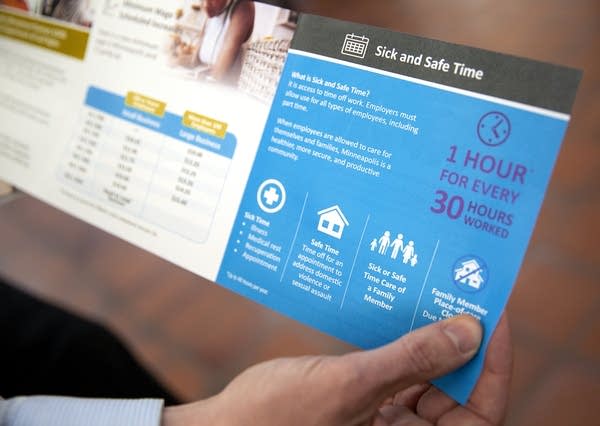Supreme Court upholds Minneapolis sick time ordinance

Minneapolis labor standards division inspector Amir Malik holds a flyer with information about sick and safe time in February.
Christine T. Nguyen | MPR News file
Go Deeper.
Create an account or log in to save stories.
Like this?
Thanks for liking this story! We have added it to a list of your favorite stories.


